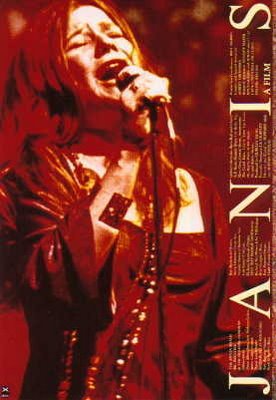J A N I S

The Janis Joplin of legend set the standard for the blues mama image of white female singers. Blues mamas have to be hard-livin', hard-lovin' and, of course, hard drinking. But life in the Gulf Coast town was not exactly hard; like much of the town's population, Janis' father, Seth, worked at the Texaco refinery and the Joplins resided comfortably.
By all accounts, Janis had a happy childhood, but her entrée into womanhood was less than graceful. As a teenager, she tended to gain weight, her soft child-blond hair turned brown and unruly, and she developed acne that would scar as well as shape her looks and personality. She became an unwilling member of an elite club of misfits, a woman who avoided mirrors because of pitted reflections, knowing that the scars underneath caused by the ones on the surface are the most painfully inflicted. Rejected and made fun of by most of her peers, she sought and found solace in the works of other outcasts -- writers, musicians, artists. When your society rejects you, you do the obvious: You reject it.
Joplin felt like an ugly duckling because she didn't fit anyone's notion of beauty. Port Arthur was a one-high-school town, and to be rejected by the school was to be rejected by the town. A culture that puts a premium on marketable feminine beauty has no use for the Janis Joplins of the world, and why should it? Her kind of beauty can only be captured in its natural state -- candidly or in performance. Look at the posed shots of Joplin and you'd swear her eyes plead with you to like her, really like her. Now, look at the performance photos, where she's recklessly lost in song, or examine the candid shots of her, where Joplin's face is soft and vulnerable in repose. In front of the photographer's camera in a studio she was naked to the world, but in front of an audience, she came alive, transforming into a vibrant and seductive entertainer who channeled every honker and shouter she ever heard on the Texas radio in the thick, black night.

0 Comments:
Post a Comment
<< Home